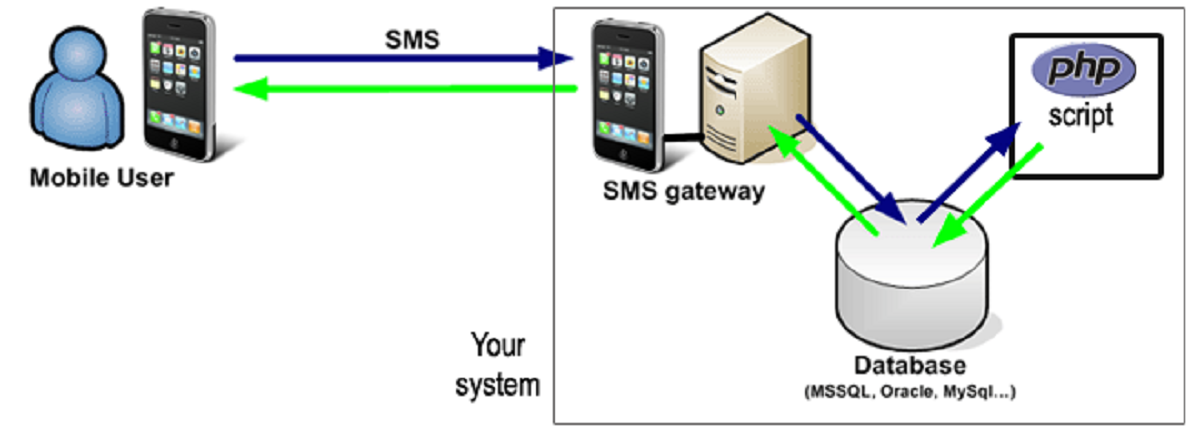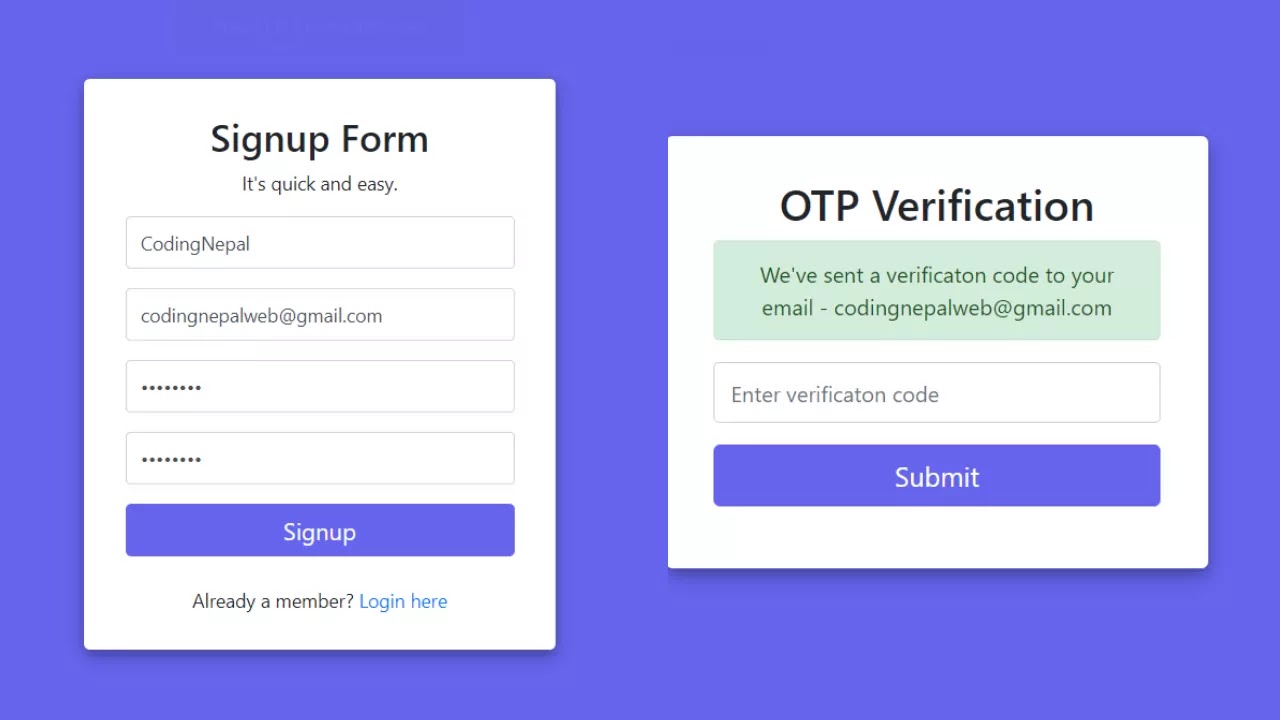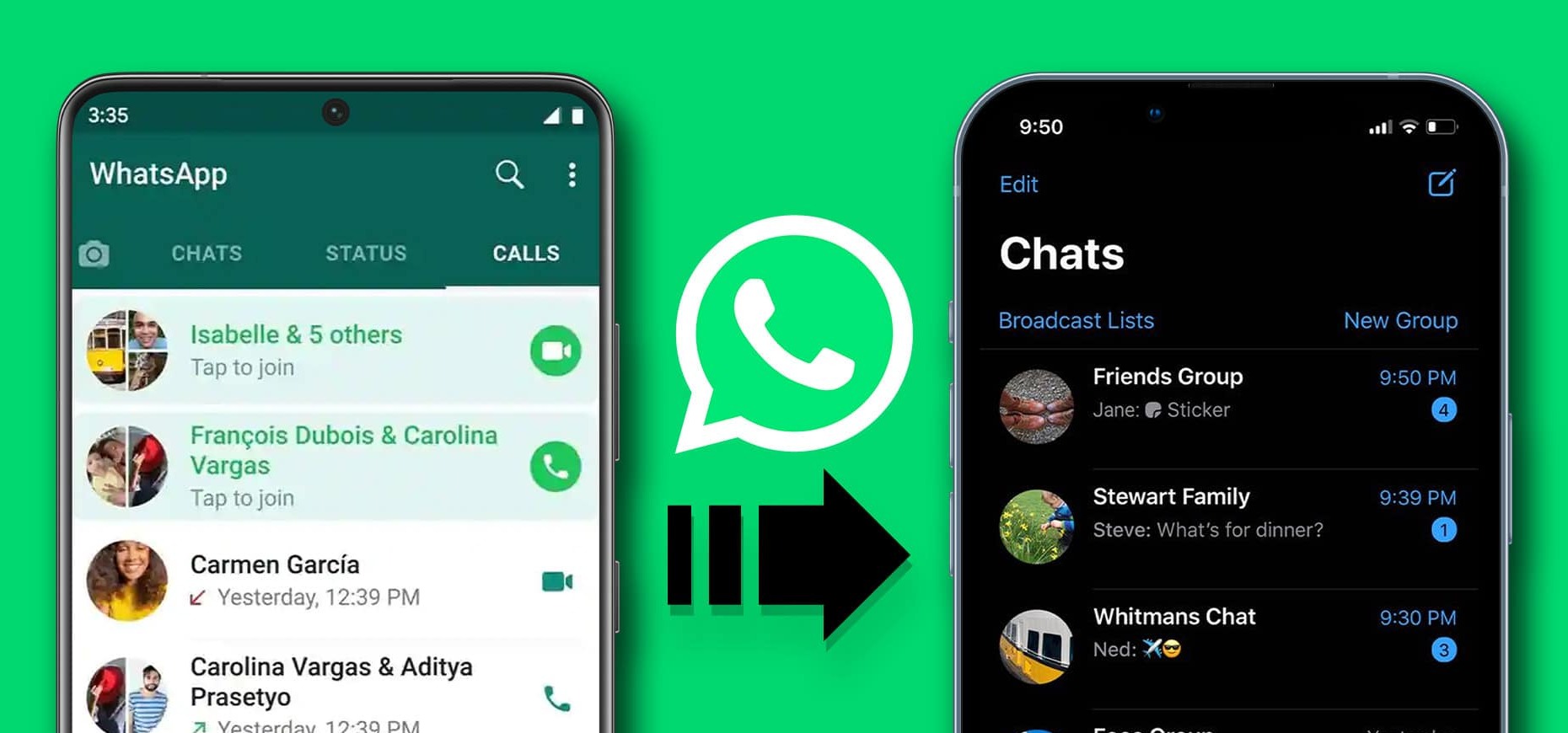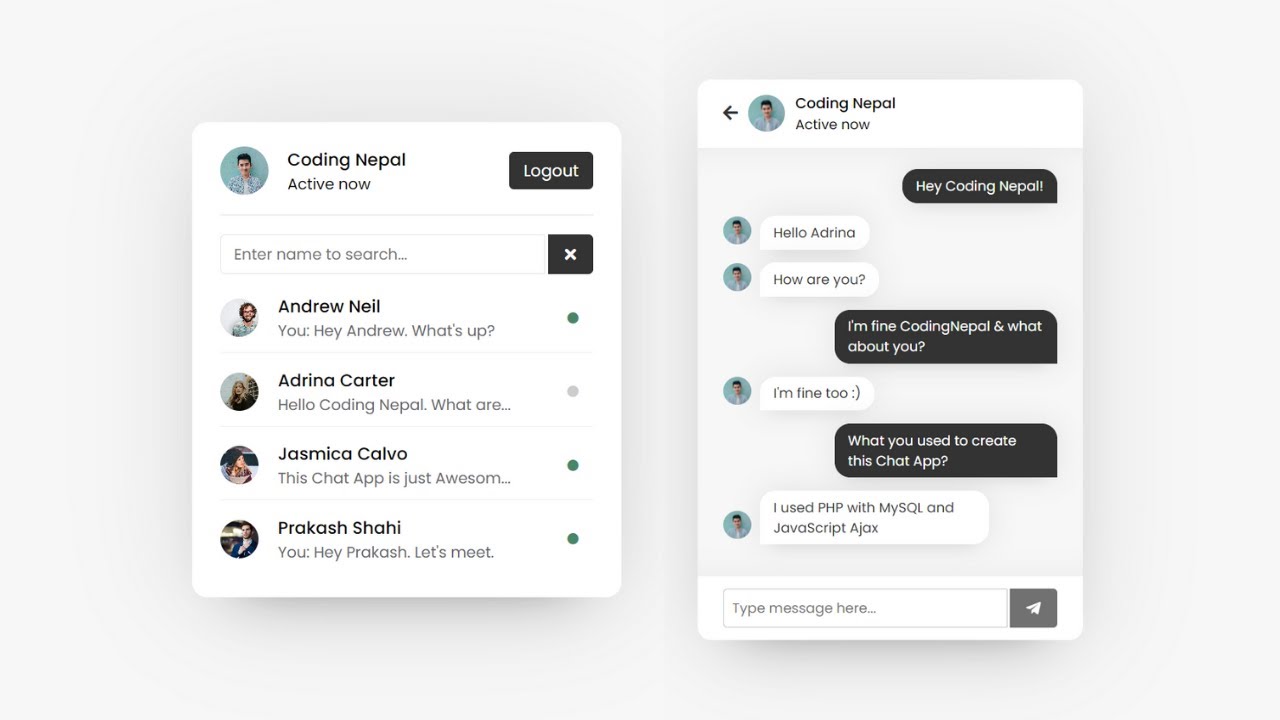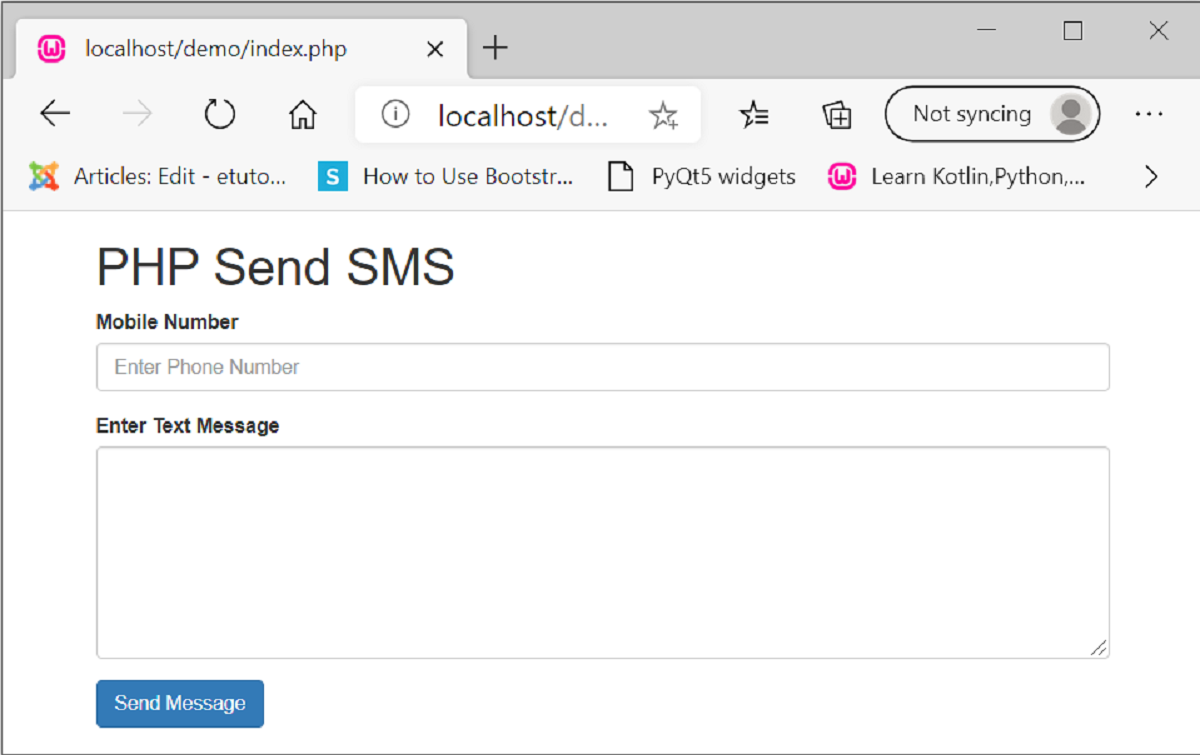Introduction
Welcome to this guide on how to send a WhatsApp message from PHP. WhatsApp is a popular messaging platform used by millions of people around the world. With the help of PHP, we can automate the process of sending WhatsApp messages, allowing us to integrate this functionality into our web applications or systems.
In this tutorial, we will explore different methods to send WhatsApp messages using PHP. We will discuss the prerequisites for setting up the WhatsApp Business API and install the necessary PHP libraries. Then, we will guide you through creating a WhatsApp message sending script using the Twilio API and the Vonage API.
Sending WhatsApp messages programmatically can be useful for various applications, such as sending automated notifications, alerts, or reminders to users. It provides a convenient way to engage with your audience and enhance communication.
Throughout this tutorial, we will provide step-by-step instructions and code examples to help you understand the process of sending WhatsApp messages from PHP effectively. Even if you have little or no prior experience with PHP programming, this guide will help you grasp the concepts and implement the functionality in your projects.
Before we dive into the implementation details, it is important to have a basic understanding of PHP programming and web development. Familiarity with HTML, CSS, and JavaScript will also be beneficial. Additionally, you will need to sign up for developer accounts with Twilio and/or Vonage to access their API services for sending WhatsApp messages.
So, if you are ready to learn how to send WhatsApp messages from PHP, let’s get started with the prerequisites and setting up the WhatsApp Business API.
Prerequisites
Before we begin, there are a few prerequisites you need to fulfill in order to successfully send WhatsApp messages from PHP.
1. WhatsApp Business Account: You need to have a WhatsApp Business Account. If you don’t have one yet, you can create it by downloading the WhatsApp Business app from the Google Play Store or the Apple App Store.
2. Twilio or Vonage Account: To send WhatsApp messages programmatically, you will need to sign up for a developer account with either Twilio or Vonage. Both services offer APIs for sending WhatsApp messages. You can choose either one based on your preference and requirements.
3. PHP Development Environment: You should have a PHP development environment set up on your local machine or server. This typically includes PHP, a web server (such as Apache or Nginx), and a database (if required for your project).
4. Basic Knowledge of PHP: Familiarity with PHP programming is essential to understand and implement the code examples provided in this tutorial. You should have a basic understanding of PHP syntax, variables, functions, and working with APIs.
5. HTML, CSS, and JavaScript: While not mandatory, having knowledge of HTML, CSS, and JavaScript will be helpful in integrating the WhatsApp message sending functionality into your web applications or systems.
6. Composer: Composer is a dependency management tool for PHP. We will be using it to install the required PHP libraries for sending WhatsApp messages. Ensure that you have Composer installed on your development environment.
7. Account SID and Auth Token: If you decide to use Twilio’s API, you will need to obtain your Twilio Account SID and Auth Token. These credentials are used to authenticate and authorize your API requests. You can find these credentials in your Twilio account dashboard.
8. API Key and API Secret: If you choose to use Vonage’s API, you will need to create an API Key and API Secret. These credentials are used to authenticate your API requests. You can generate these credentials from your Vonage account dashboard.
Once you have fulfilled all the prerequisites mentioned above, you are ready to move on to the next steps of setting up the WhatsApp Business API and installing the required PHP libraries.
Setting up the WhatsApp Business API
In order to send WhatsApp messages from PHP, you need to set up the WhatsApp Business API on your server. This API allows you to interact with WhatsApp and send messages programmatically.
Here is a step-by-step guide to help you set up the WhatsApp Business API:
- WhatsApp Business Account: As mentioned earlier, make sure you have a WhatsApp Business Account. You can download the WhatsApp Business app from the Google Play Store or the Apple App Store and create an account.
- Create a Twilio or Vonage Account: Choose one of the two services, Twilio or Vonage, based on your preferred API provider for sending WhatsApp messages.
- Set up a Sandbox Account (Twilio Only): If you decide to use Twilio, you need to set up a Sandbox Account to test your WhatsApp integration. Twilio provides a sandbox environment where you can send messages to a designated phone number for testing purposes.
- Obtain WhatsApp Sandbox Number (Twilio Only): In the Twilio console, navigate to the Programmable SMS section and request a WhatsApp Sandbox Number. This number will be used to send and receive WhatsApp messages in the sandbox environment.
- Generate API Credentials (Vonage Only): If you choose Vonage as your API provider, generate API credentials, including the API Key and API Secret, from the Vonage account dashboard. These credentials will be required to authenticate your API requests.
- Set up a Web Server: You need to have a web server, such as Apache or Nginx, configured to host your PHP scripts and handle API requests.
- Install SSL Certificate: WhatsApp requires a secure connection to send messages. Ensure that your web server has a valid SSL certificate installed. You can obtain a free SSL certificate from Let’s Encrypt or use a trusted certificate provider.
- Configure Webhook URL: To receive incoming messages and status updates, you need to configure a webhook URL in your WhatsApp Business Account settings. This URL should point to the PHP script that will handle the incoming webhook notifications.
- Test the Setup: Once everything is set up, test the integration by sending a test message from your PHP script. Verify that the message is successfully delivered to the desired recipient’s WhatsApp account.
By following these steps, you will have successfully set up the WhatsApp Business API and prepared your server to send WhatsApp messages programmatically. Now, let’s move on to installing the required PHP libraries.
Installing required PHP libraries
Before we can start sending WhatsApp messages from PHP, we need to install the necessary PHP libraries that will allow us to interact with the WhatsApp Business API. These libraries provide the required functionality and handle the communication with the API endpoints.
There are different libraries available for PHP, depending on the API provider you choose. Twilio and Vonage each have their own PHP libraries that you can use to send WhatsApp messages. Here’s how to install them:
Twilio PHP library:
- Open your terminal or command-line interface.
- Navigate to the root directory of your PHP project, or the directory where you want to install the Twilio PHP library.
- Run the following command to install the Twilio PHP library using Composer:
composer require twilio/sdk
This will download and install the Twilio PHP library and its dependencies in your project.
Vonage PHP library:
- Open your terminal or command-line interface.
- Navigate to the root directory of your PHP project, or the directory where you want to install the Vonage PHP library.
- Run the following command to install the Vonage PHP library using Composer:
composer require vonage/client
This will download and install the Vonage PHP library and its dependencies in your project.
After successfully installing the required PHP library, you can now proceed with creating the PHP script that will send WhatsApp messages using the Twilio or Vonage API. In the next section, we will guide you through the process of creating the WhatsApp message sending script in PHP.
Creating the WhatsApp message sending script in PHP
Now that we have set up the WhatsApp Business API and installed the required PHP libraries, it’s time to create the PHP script that will send WhatsApp messages. This script will utilize the functionalities provided by the Twilio or Vonage API to send messages programmatically.
Here are the general steps to create the WhatsApp message sending script:
- Import the necessary PHP libraries: Begin by including the Twilio or Vonage PHP library in your PHP script, depending on the API provider you have chosen.
- Set up the API credentials: Retrieve your Twilio Account SID, Auth Token, and WhatsApp Sandbox Number (if using Twilio), or your Vonage API Key and API Secret (if using Vonage). Store these credentials securely in variables in your PHP script.
- Set up the recipient’s phone number: Define the phone number of the recipient to whom you want to send the WhatsApp message. Ensure that the phone number is in the correct format, including the country code.
- Create the message content: Define the content of your WhatsApp message. You can include text, emojis, media attachments (such as images, videos, or documents), and any other desired elements.
- Initialize the API client: Create an instance of the Twilio or Vonage API client, passing in the API credentials.
- Send the WhatsApp message: Use the appropriate method provided by the API client to send the WhatsApp message. This method typically requires the recipient’s phone number and the message content as parameters.
- Handle the response: Capture the response from the API client and check for any errors or success indicators. You can also log or display the response for debugging purposes.
By following these steps and customizing the script according to your specific requirements, you will be able to send WhatsApp messages programmatically using PHP. In the following sections, we will delve into the specific implementation details of sending WhatsApp messages using the Twilio or Vonage API.
Sending a WhatsApp message using the Twilio API
If you have chosen to use the Twilio API as your WhatsApp message provider, you can follow these steps to send WhatsApp messages programmatically through PHP:
- Import Twilio PHP library: Begin by including the Twilio PHP library in your PHP script using the
require_oncestatement. - Set up the API credentials: Obtain your Twilio Account SID and Auth Token from your Twilio account dashboard. Store these credentials securely in variables.
- Set up the recipient’s phone number: Define the recipient’s phone number in the format:
+countryCodephoneNumber. For example,+14155552671. - Create the message content: Define the content of your WhatsApp message, including text, emojis, and media attachments if desired.
- Initialize the Twilio client: Create an instance of the Twilio client by passing your Account SID and Auth Token as parameters to the
Clientclass. - Send the WhatsApp message: Use the
messages->createmethod of the Twilio client to send the WhatsApp message. Pass the recipient’s phone number and the message content as parameters. - Handle the response: Capture the response returned by the
createmethod and check for any errors or success indicators. You can log or display the response for debugging purposes.
With these steps implemented in your PHP script, you will be able to send WhatsApp messages using the Twilio API. Remember to handle exceptions and errors gracefully to ensure smooth execution of your code.
Next, we will explore how to send WhatsApp messages using the Vonage API in PHP.
Sending a WhatsApp message using the Vonage API
If you have chosen the Vonage API as your WhatsApp message provider, you can follow these steps to send WhatsApp messages programmatically through PHP:
- Import Vonage PHP library: Begin by including the Vonage PHP library in your PHP script using the
require_oncestatement. - Set up the API credentials: Generate your Vonage API Key and API Secret from your Vonage account dashboard. Store these credentials securely in variables.
- Set up the recipient’s phone number: Define the recipient’s phone number in the format:
+countryCodephoneNumber. For example,+14155552671. - Create the message content: Define the content of your WhatsApp message, including text, emojis, and media attachments if desired.
- Initialize the Vonage client: Create an instance of the Vonage client by passing your API Key and API Secret as parameters to the
Clientclass. - Send the WhatsApp message: Use the
messages->sendmethod of the Vonage client to send the WhatsApp message. Pass the recipient’s phone number and the message content as parameters. - Handle the response: Capture the response returned by the
sendmethod and check for any errors or success indicators. You can log or display the response for debugging purposes.
By implementing these steps in your PHP script, you will be able to send WhatsApp messages using the Vonage API. Remember to handle exceptions and errors gracefully to ensure smooth execution of your code.
Now that we have covered how to send WhatsApp messages using both the Twilio and Vonage APIs, you can choose the one that best suits your requirements and integrate it into your PHP applications or systems.
Conclusion
In this guide, we have explored the process of sending WhatsApp messages from PHP using either the Twilio or Vonage API. By following the steps outlined in this tutorial, you have learned how to set up the WhatsApp Business API, install the necessary PHP libraries, and create a PHP script to send WhatsApp messages.
Sending WhatsApp messages programmatically can be a valuable addition to your web applications or systems, providing an efficient way to engage with your audience and deliver automated notifications, alerts, or reminders. It allows for seamless integration of WhatsApp messaging functionalities into your PHP projects.
Remember to ensure that you fulfill the prerequisites, including having a WhatsApp Business Account, setting up a developer account with your chosen API provider (Twilio or Vonage), having a PHP development environment, and basic knowledge of PHP programming and web development.
During the setup process, make sure to configure the API credentials, provide the recipient’s phone number in the proper format, and define the message content. Handle the API responses and errors gracefully to ensure smooth execution of your code.
Whether you choose to use the Twilio or Vonage API, both provide reliable and robust methods for sending WhatsApp messages programmatically. Evaluate your specific requirements and select the API provider that best suits your needs.
Now that you have the knowledge and understanding of how to send WhatsApp messages from PHP, you are equipped to integrate this functionality into your projects and enhance your communication capabilities.
Happy coding and happy WhatsApp messaging!







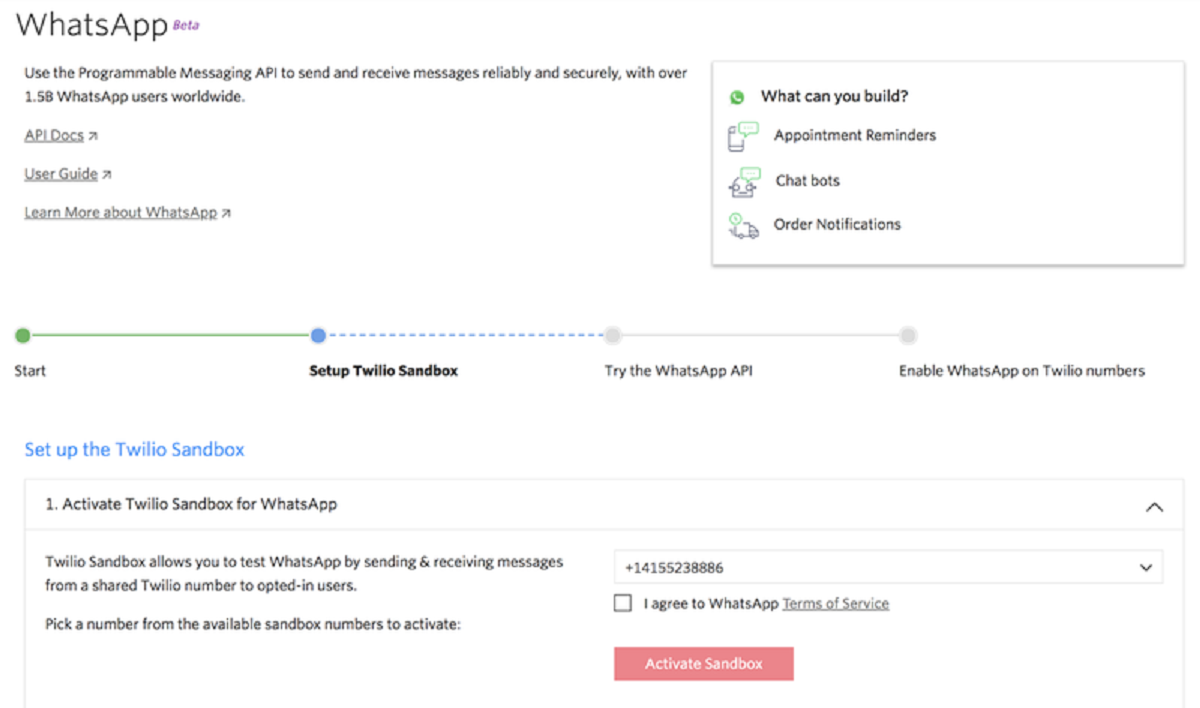


![How to Connect and Use WhatsApp Web [Mac & Windows]](https://robots.net/wp-content/uploads/2020/09/WhatsApp-for-web-300x171.jpg)
